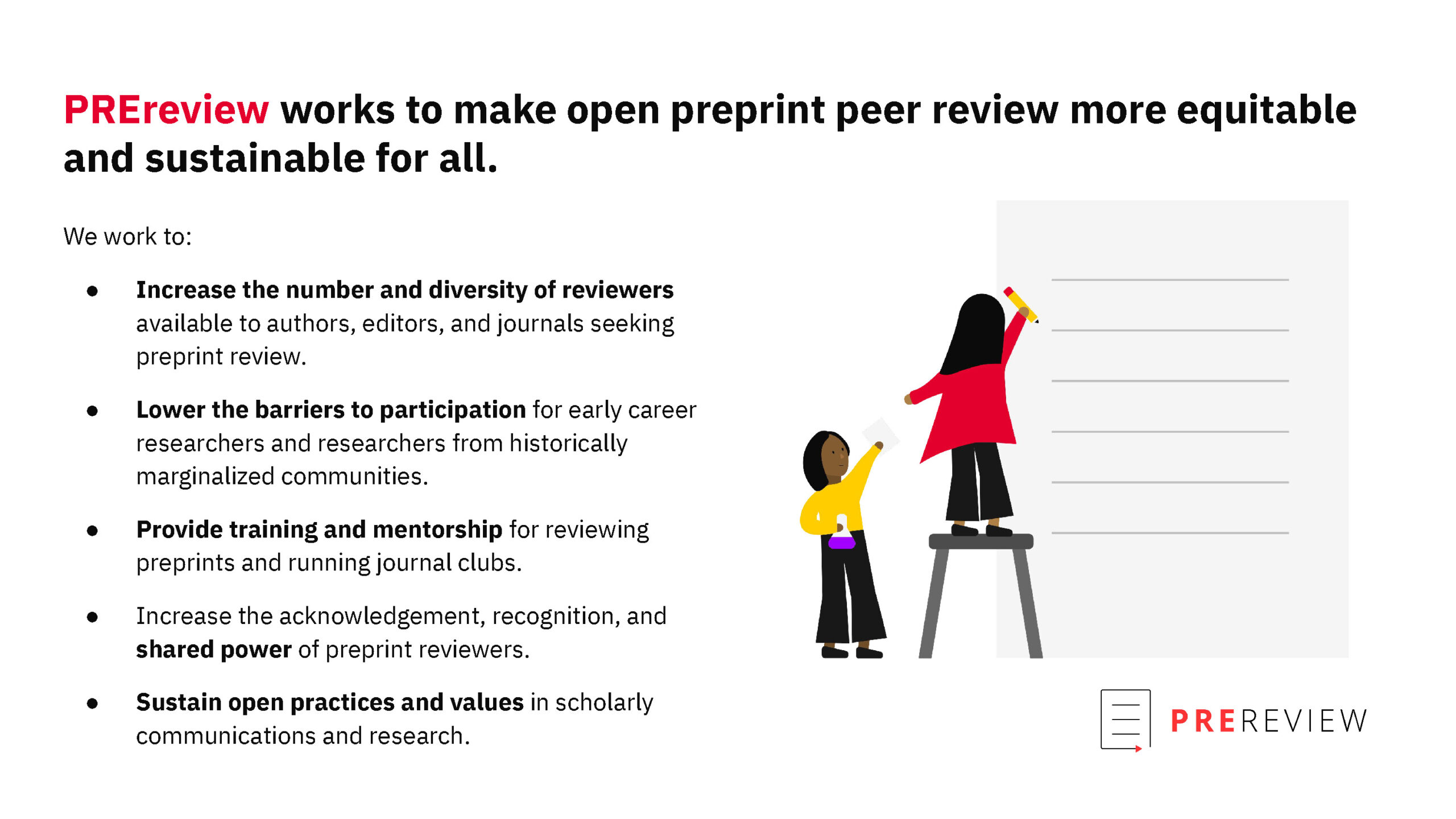MODERATOR:
Tony Alves
SVP of Product Management
Highwire Press
@occupystm
SPEAKERS:
Thomas Lemberger
Head of Open Science Implementation
European Molecular Biology Organization
@tlemberger
Fiona Hutton
Head of Publishing
eLife Sciences Publications
Monica Granados
Leadership Team
PREreview
@Monsauce
Katherine Brown
Executive Editor of Development
The Company of Biologists
@katemmabrown1
REPORTER:
Becky Fargen
Journal Manager
Elsevier
Peer review has changed since the Philosophical Transactions of the Royal Society set the standards in 1665. In this session, 4 community peer review models were presented that differed from traditional peer review in that the journal does not solicit reviews; rather, members of the scientific community volunteer to review. Although they have several differences, each model starts with the author uploading a preprint, then reviews are posted publicly (usually anonymously) for the authors to respond to until they are ready to publish a final version. Note that there is no accept or reject; authors decide what is the version of record. This is a hot new trend in scholarly publishing. When eLife tweeted about their workflow change, the tweet garnered over 1 million views.
To start, Thomas Lemberger of the European Molecular Biology Organization (EMBO) talked about Review Commons,1 which was founded in 2019. In this model, Review Commons commissions the in-depth peer review of preprints before they are submitted to a journal. The reviews and the reply from the authors are posted next to the preprint. There are clear benefits to this model, namely accelerating access to peer reviewed research in the form of reviewed preprints and eliminating cycles of peer review, sparking a culture shift and promoting open science. However, journal-agnostic peer review can be challenging for editors who may be left unsure about the fit of a paper for their journal in terms of advance and audience.
Next, Fiona Hutton of eLife presented information on their new publishing model, introduced in 2023, that builds on their policy of only publishing papers previously posted as a preprint. The preprint is reviewed via an eLife Assessment,2 and authors decide what will be the version of record. The author’s response to the review is also published. One notable benefit of this is that the article processing charge is $2000 instead of $3000. Fiona also emphasized the benefits of free, immediate access to research and mentioned the rise of preprint servers such as bioRxiv and medRxiv.
Monica Granados, herself a researcher and peer reviewer, talked about PREreview3 and how community peer review is challenging the idea of who a reviewer is. Traditionally, the pool of reviewers available in a particular field is small and homogenous, with little-to-no formal training provided. Community peer review extends this pool of reviewers and opens up opportunities that might not have been available to certain groups (Figure). PREreview, founded in 2017, also creates a community centered around peer review mentoring, open platforms (i.e., anyone with an ORCiD can join), and live-streamed preprint journal clubs, which use video calling platforms to bring people together virtually to collaboratively review a preprint. The training focuses on debiasing reviews and being collaborative.

Next, Katherine Brown of the Company of Biologists talked about preLights,4 introduced in 2018. preLight posts are commentaries on preprints provided by a select group of early career researchers, called preLighters. These posts typically summarize the preprint, explain why the preLighter found the paper exciting, and include some questions for the authors about the work, to which the authors can respond. Like PREreivew, preLights builds a sense of community. Although most preLighters post only once or twice a year, there is a Slack group, and they are working on forming more of a community. Of the roughly 1300 preLighted preprints, 64% have been picked up by bioRxiv’s algorithm as having been published in journals. A new initiative from preLights, postLights, aims to explore the journey from preprint to final published paper by providing commentary on how the paper changes between versions.
In response to some interesting questions raised during a Q&A, Monica clarified that PREreview allows reviewers to remain anonymous if they want. Thomas talked about how the time-to-publication went from 300 days down to 70 with community peer review. The 70 days was before journal submission, however.
One of the takeaways was how it is necessary to promote the importance of peer review. Researchers may ask: What’s in it for me? This led to a mini discussion about the invisible work of academics, including peer review, tenure review, and mentoring. Additional communication may be needed to clarify this to the public, and rewards or recognition may help in securing reviewers. It is a lot of extra work for academics and researchers to take time to peer review, and we want to thank them for their efforts.
